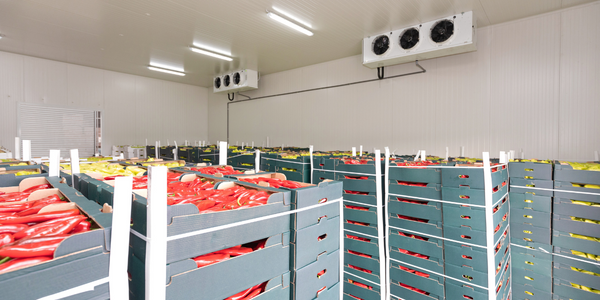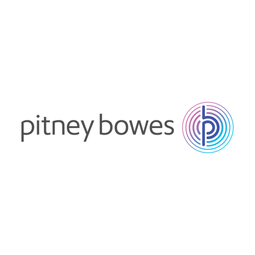
技术
- 传感器 - 触觉传感器
适用行业
- 运输
适用功能
- 物流运输
- 销售与市场营销
用例
- 公共交通管理
- 供应链可见性(SCV)
客户
托比
关于客户
Tobi是一个国际快时尚在线零售目的地,为全球 100 多个国家的年轻女性提供服务。
自 2007 年以来,Tobi 已向超过 150 万 Tobi 客户提供西海岸风格和悠闲的态度。
该公司致力于将最时尚的时装从客户的仓库快速送到客户家门口。
挑战
Tobi 有限的订单跟踪能力促使客户频繁查询,其中许多是关于退货的。退货流程缺乏明确性使客户想知道他们何时会收到退款或更换商品,从而造成负面的客户体验。
Tobi 团队在加快客户查询时也遇到了缺乏可见性的问题。
解决方案
作为一家成长中的在线零售商,Tobi 以其对客户的承诺而自豪,但需要找到一种方法来控制其不断上升的退货成本。他们聘请了 Pitney Bowes,后者实施了一个解决方案,让客户可以从新推出的 Shipment Manager 门户下载和打印 SmartLabel®,将其放在退货时,然后将其放入家里、工作场所或任何美国邮局的邮件中。
接下来,Pitney Bowes 帮助 Tobi 实施了 Transit Trigger 计划,该计划在首次扫描 SmartLabel 时向客户发送包含跟踪信息的自动电子邮件。
除了提高客户方面的可见性外,Shipment Manager 门户还允许 Tobi 客户服务团队跟踪在途退货并让他们能够轻松生成报告。
运营影响
数量效益

Case Study missing?
Start adding your own!
Register with your work email and create a new case study profile for your business.
相关案例.

Case Study
Airport SCADA Systems Improve Service Levels
Modern airports are one of the busiest environments on Earth and rely on process automation equipment to ensure service operators achieve their KPIs. Increasingly airport SCADA systems are being used to control all aspects of the operation and associated facilities. This is because unplanned system downtime can cost dearly, both in terms of reduced revenues and the associated loss of customer satisfaction due to inevitable travel inconvenience and disruption.

Case Study
IoT-based Fleet Intelligence Innovation
Speed to market is precious for DRVR, a rapidly growing start-up company. With a business model dependent on reliable mobile data, managers were spending their lives trying to negotiate data roaming deals with mobile network operators in different countries. And, even then, service quality was a constant concern.

Case Study
Digitize Railway with Deutsche Bahn
To reduce maintenance costs and delay-causing failures for Deutsche Bahn. They need manual measurements by a position measurement system based on custom-made MEMS sensor clusters, which allow autonomous and continuous monitoring with wireless data transmission and long battery. They were looking for data pre-processing solution in the sensor and machine learning algorithms in the cloud so as to detect critical wear.

Case Study
Cold Chain Transportation and Refrigerated Fleet Management System
1) Create a digital connected transportation solution to retrofit cold chain trailers with real-time tracking and controls. 2) Prevent multi-million dollar losses due to theft or spoilage. 3) Deliver a digital chain-of-custody solution for door to door load monitoring and security. 4) Provide a trusted multi-fleet solution in a single application with granular data and access controls.

Case Study
Vehicle Fleet Analytics
Organizations frequently implement a maintenance strategy for their fleets of vehicles using a combination of time and usage based maintenance schedules. While effective as a whole, time and usage based schedules do not take into account driving patterns, environmental factors, and sensors currently deployed within the vehicle measuring crank voltage, ignition voltage, and acceleration, all of which have a significant influence on the overall health of the vehicle.In a typical fleet, a large percentage of road calls are related to electrical failure, with battery failure being a common cause. Battery failures result in unmet service agreement levels and costly re-adjustment of scheduled to provide replacement vehicles. To reduce the impact of unplanned maintenance, the transportation logistics company was interested in a trial of C3 Vehicle Fleet Analytics.

Case Study
3M Gains Real-Time Insight with Cloud Solution
The company has a long track record of innovative technology solutions. For example, 3M helps its customers optimize parking operations by automating fee collection and other processes. To improve support for this rapidly expanding segment, 3M needed to automate its own data collection and reporting. The company had recently purchased the assets of parking, tolling, and automatic license plate reader businesses, and required better insight into these acquisitions. Chad Reed, Global Business Manager for 3M Parking Systems, says, “With thousands of installations across the world, we couldn’t keep track of our software and hardware deployments, which made it difficult to understand our market penetration.” 3M wanted a tracking application that sales staff could use to get real-time information about the type and location of 3M products in parking lots and garages. So that it could be used on-site with potential customers, the solution would have to provide access to data anytime, anywhere, and from an array of mobile devices. Jason Fox, Mobile Application Architect at 3M, upped the ante by volunteering to deliver the new app in one weekend. For Fox and his team, these requirements meant turning to the cloud instead of an on-premises datacenter. “My first thought was to go directly to the cloud because we needed to provide access not only to our salespeople, but to resellers who didn’t have access to our internal network,” says Fox. “The cloud just seemed like a logical choice.”



